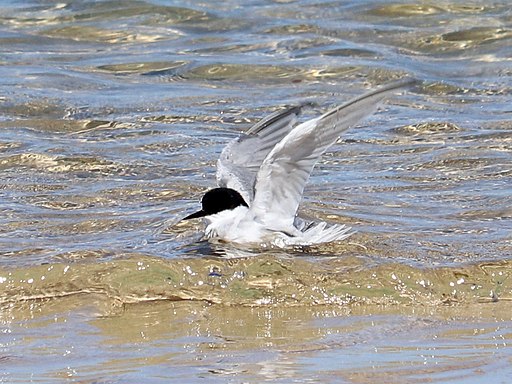Superregnum: Eukaryota
Cladus: Unikonta
Cladus: Opisthokonta
Cladus: Holozoa
Regnum: Animalia
Subregnum: Eumetazoa
Cladus: Bilateria
Cladus: Nephrozoa
Superphylum: Deuterostomia
Phylum: Chordata
Subphylum: Vertebrata
Infraphylum: Gnathostomata
Megaclassis: Osteichthyes
Cladus: Sarcopterygii
Cladus: Rhipidistia
Cladus: Tetrapodomorpha
Cladus: Eotetrapodiformes
Cladus: Elpistostegalia
Superclassis: Tetrapoda
Cladus: Reptiliomorpha
Cladus: Amniota
Classis: Reptilia
Cladus: Eureptilia
Cladus: Romeriida
Subclassis: Diapsida
Cladus: Sauria
Infraclassis: Archosauromorpha
Cladus: Crurotarsi
Divisio: Archosauria
Cladus: Avemetatarsalia
Cladus: Ornithodira
Subtaxon: Dinosauromorpha
Cladus: Dinosauriformes
Cladus: Dracohors
Cladus: Dinosauria
Ordo: Saurischia
Cladus: Eusaurischia
Subordo: Theropoda
Cladus: Neotheropoda
Cladus: Averostra
Cladus: Tetanurae
Cladus: Avetheropoda
Cladus: Coelurosauria
Cladus: Tyrannoraptora
Cladus: Maniraptoromorpha
Cladus: Maniraptoriformes
Cladus: Maniraptora
Cladus: Pennaraptora
Cladus: Paraves
Cladus: Eumaniraptora
Cladus: Avialae
Infraclassis: Aves
Cladus: Euavialae
Cladus: Avebrevicauda
Cladus: Pygostylia
Cladus: Ornithothoraces
Cladus: Ornithuromorpha
Cladus: Carinatae
Parvclassis: Neornithes
Cohors: Neognathae
Cladus: Neoaves
Ordo: Charadriiformes
Subordo: Lari
Familia: Laridae
Subfamilia: Sterninae
Genus: Sternula
Species: Sternula balaenarum
Name
Sternula balaenarum Strickland, 1852
Synonyms
Sterna balaenarum
References
Contributions to Ornithology 5: 160.
Vernacular names
Afrikaans: Damarasterretjie
azərbaycanca: Balina susüpürəni
català: Xatrac de Damara
čeština: Rybák damarský
Cymraeg: Môr-wennol Damara
dansk: Damaraterne
Deutsch: Damaraseeschwalbe
English: Damara Tern
español: Charrancito de Damara
فارسی: پرستوی دریایی نهنگنشین
suomi: Afrikanpikkutiira
français: Sterne des baleiniers
italiano: Sterna del Damara
Nederlands: Damarastern
русский: Китовая крачка
svenska: Damaratärna
The Damara tern (Sternula balaenarum) is a species of small tern in the family Laridae which breeds in the southern summer in southern Africa and migrates to tropical African coasts to winter.
Description
At 23 centimetres or 9.1 inches in length the Damara tern is a small, rather pale tern. In breeding plumage adult has black cap extending from forehead the onto nape and a very pale grey back. In flight, there is a black triangular wing tip which runs from the carpal joint to the tip. In non-breeding plumage the adult shows white on the forehead and crown, with black mask going through the eyes and meeting on the nape. Immature birds are marked with buff bars across the mantle.[1]
Voice
The calls of the Damara tern are a high-pitched, sharp "tsit tsit" and quick, harsh "kid-ick".:[2]
Distribution and habitat
It breeds in western coastal Southern Africa from the Eastern Cape through the Western Cape and Northern Cape into Namibia and Angola; 98% of the population of 14,000 individuals nests in Namibia.[1] Non-breeding birds migrate north reaching Benin, Cameroon, Republic of the Congo, Democratic Republic of the Congo, Ivory Coast, Gabon, Ghana, Liberia, Nigeria, and Togo.[3]
The Damara tern generally prefers shorelines in arid, desert regions particularly where there are sheltered bays, estuaries, lagoons and reefs. For breeding it uses gravel plains between dunes and on salt pans.[4]
Habits
The Damara tern eats mainly small fish, with the occasional squid, which are caught in repeated plunge dives from a height of 3-8m. Their migration is timed to coincide with spawning shoals of small fish in the shallow coastal waters of the Gulf of Guinea caused by strong upwellings of the coast of Ghana. These wintering birds roost communally but feed solitarily, spacing themselves at 10-50m from other Damara terns.[1]
Eggs are laid in a plain scrape in the substrate which is sometimes lined with shell chips or small stones. The clutch normally consists of one, occasionally two eggs with an incubation period of 18–22 days. For the first few days the female broods the chicks and the food is provided by the male then the chicks leave the scrape at a few days old and move towards the shore, they fledge after 20 days forming juvenile flocks. The juveniles are dependent on the adults for two and half months after they fledge.[1][4]
Taxonomy
This species was previously included in the genus Sterna but with other small terns such as the little tern and the least tern it is now considered to be within the genus Sternula.[5]
References
BirdLife International (2021). "Sternula balaenarum". IUCN Red List of Threatened Species. 2021: e.T22694699A179473845. Retrieved 17 November 2021.
"Damara Tern (Sternula balaenarum)". HBW Alive. Lynx Edicions. Retrieved 2016-11-14.
J. Braby (2010). "New migration records for the Damara tern". Ornithological Observations. 1: 38–41.
"Sterna balaenarum (Damara tern)". Biodiversity Explorer. Iziko Museums of South Africa. Retrieved 2016-11-14.
Banks et al. 2007. Forty-eighth supplement to the American Ornithologists' Union Checklist of North American Birds Archived December 11, 2007, at the Wayback Machine. The Auk 124(1): 1109-1115.
Retrieved from "http://en.wikipedia.org/"
All text is available under the terms of the GNU Free Documentation License


